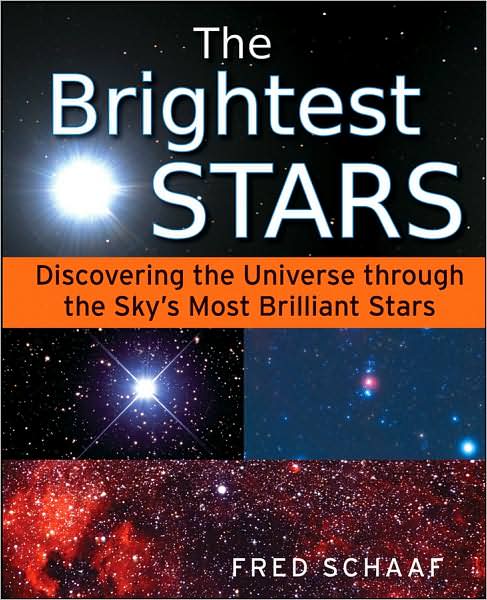[/caption]
Folk stories often commence with entreaties to the reader to listen with their heart. On the other hand, science books seldom acknowledge this aspect of a person. However, Fred Schaaf in his book ‘The Brightest Stars‘ doesn’t shy away from the human aspect. Rather, his astronomy book champions the human spirit as the source of scientific discovery and, as if to prove it, the book’s passages seem to come right from the author’s heart.
There can’t be a more simple way of starting into astronomy than by looking for the brightest stars. As this book points out, only a few stars markedly outshine the rest when all we use is the unaided eye. In consequence, this book recounts the lore and virtue of just 21 stars from Sirius to Regulus. And, though this book has great amounts of information and data, it is the author’s use of warm words and colourful diction that make it such a pleasure to read.
In this book, stars warm to our hearts by including almost every aspect that a star might effect day to day living. For example, Sirius, the dog star was known as Sopdet the Preparer as it presaged the Nile flood. And, Alpha Centauri was important in South China as the determinant star of the stellar division called Nan Mun. Then, there are diagrams showing some stars’ relative motions over millions of years that also include likely images seen by our forebears. Or, there’s consideration of how aliens living on planets would see our Sun. And the book even includes these stars’ entry into today’s lore, whether in science fiction shows like Doctor Who or books like Harry Potter. With all this, the stars become so much more relevant and important than just being a little bit of light brightening up a cool night.
Nevertheless, the intent of this book, as defined by its subtitle, is to allow the reader to discover the universe through the sky’s most brilliant stars. To aid in this, its first few chapters include rudimentary rules of stargazing whether defining the galactic plane or using hands to estimate angular spans. The chapters that discuss the bright stars then have locators to ensure the reader can track the desired star whether using seasons, constellations and/or altazimuth. So, whether wanting to discover the stars in the sky or learn about a star’s importance in our history, this book has the entertaining, informative and usually colourful response.
The night’s stars are a natural and poignant focal point for story tellers. Imagination turns patterns into mythical gods and warriors. But detailed scientific study turns the same dots into magnitude, colour and location. Fred Schaaf’s book ‘The Brightest Stars‘ balances these two views and gives the reader little choice but to be impressed by the value of learning more of the lore and science of stars.
Read more reviews online, or purchase a copy from Amazon.com.
Did you want to know which are the 10 brightest stars.

